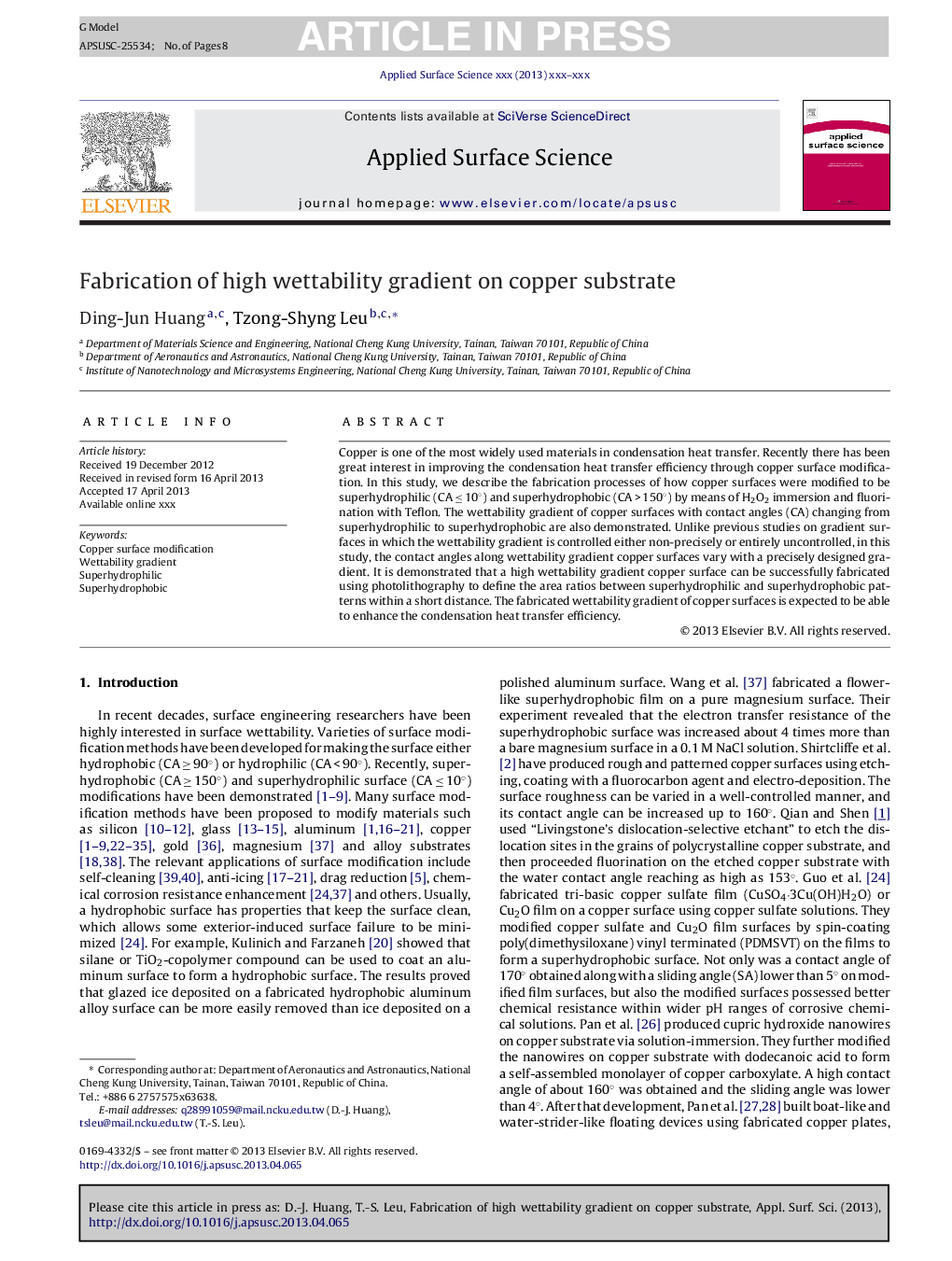| Article ID | Journal | Published Year | Pages | File Type |
|---|---|---|---|---|
| 5352958 | Applied Surface Science | 2013 | 8 Pages |
Abstract
Copper is one of the most widely used materials in condensation heat transfer. Recently there has been great interest in improving the condensation heat transfer efficiency through copper surface modification. In this study, we describe the fabrication processes of how copper surfaces were modified to be superhydrophilic (CA â¤Â 10°) and superhydrophobic (CA > 150°) by means of H2O2 immersion and fluorination with Teflon. The wettability gradient of copper surfaces with contact angles (CA) changing from superhydrophilic to superhydrophobic are also demonstrated. Unlike previous studies on gradient surfaces in which the wettability gradient is controlled either non-precisely or entirely uncontrolled, in this study, the contact angles along wettability gradient copper surfaces vary with a precisely designed gradient. It is demonstrated that a high wettability gradient copper surface can be successfully fabricated using photolithography to define the area ratios between superhydrophilic and superhydrophobic patterns within a short distance. The fabricated wettability gradient of copper surfaces is expected to be able to enhance the condensation heat transfer efficiency.
Related Topics
Physical Sciences and Engineering
Chemistry
Physical and Theoretical Chemistry
Authors
Ding-Jun Huang, Tzong-Shyng Leu,
